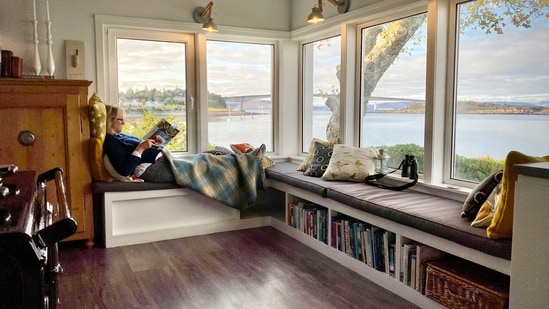
WELLNESS SPACES AT HOME: INTERIOR DESIGN TIPS FOR CRAFTING RETREATS FOR ULTIMATE RELAXATION AND REJUVENATION
Interior design has risen above the idea of creating luxurious spaces, it is now promoting health and well-being through design. Design has a profound impact on our mental health offering a retreat from our daily grind. A well-balanced design focuses on the surroundings that influence stress levels and psychological responses. Interior designers are seen as essential players in creating spaces that improve people's quality of life. They blend design, nature, and technology elements to promote mental and emotional well-being. HT Lifestyle has reached out to experts from the design industry to explore ideas for creating wellness-centric spaces that can offer a holistic living experience. (Also read: Home renovation ideas: 5 tips for designing interiors that blend aesthetics with practicality for modern lifestyles )
Wellness-focused Interior Design Tips
Introducing Biophilic Principles in Design
To promote a feeling of connectedness with nature, designers introduce biophilic elements into the design. It aims to incorporate natural elements into interior environments. "Natural textures, materials, and patterns can be included to produce a calm and organic ambience. Adding greenery to the interior, such as indoor plants, makes the space feel lively and revitalising. Ultimately, a brighter and more upbeat atmosphere can be produced by the abundance of sunlight that enters the room through large windows, skylights, and open bottom plans", asserts Ar. Jamshed Banaji, Principal Architect at Banaji and Associates.
Colour Psychology in Design
Colours have a crucial impact on our living environments, elevating the essence of mental well-being. "Hues like blues and greens evoke a sense of calm and relaxation while nature-inspired tones like beige and taupe bring a sense of balance and tranquillity. Further, yellows and oranges, associated with sunlight, add vibrancy to the space. Ultimately, lavenders and purples are chosen for their meditative qualities and create a restful environment for mindfulness", suggests Ar. Prashant Kochhar, Founder & Principal Architect of LTDF Architecture + Interior Design.
Wellness by Ergonomics and Comfort
Ergonomics is a key component of wellness-focused interior design, as it helps to promote comfort and physical health. "Customised furniture that accommodates various body shapes and sizes offers the finest support and encourages proper posture. Comfort and functionality are taken into consideration while designing desks, chairs, and seating configurations. Additionally, flexibility and adaptability in furniture and layout allow for the incorporation of activities like yoga, meditation, or relaxation, which contribute to physical well-being", further adds Jamshed.
Mindful Decor Elements and Materials
Comfort can be enhanced by the use of sustainable and natural materials in furnishings and décor. "To add to the visual appeal, materials like wood, bamboo, and cork give off a cosy, tactile sensation that encourages connectivity with nature and well-being. Soft fabrics and textures are incorporated into the design to improve comfort. Comfortable wraps, soft cushions, and plush rugs add tactile qualities that promote rest", asserts Prashant.
Creating wellness spaces at home is about fostering a sanctuary where relaxation and rejuvenation are paramount! So, embrace the art of designing for wellness and experience the profound impact of a thoughtfully curated space that nurtures mind, body, and spirit.
Read more news like this on HindustanTimes.com
2024-05-19T10:34:20Z dg43tfdfdgfd